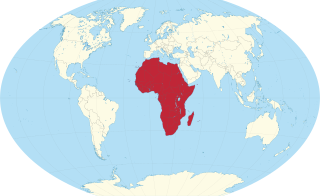
Immigration to the United States has been a major source of population growth and cultural change throughout much of its history. In absolute numbers, the United States has by far the highest number of immigrant population in the world, with 50,661,149 people as of 2019. This represents 19.1% of the 244 million international migrants worldwide, and 14.4% of the United States' population. In 2018, there were almost 90 million immigrants and U.S.-born children of immigrants in the United States, accounting for 28% of the overall U.S. population.

Xenophobia is the fear or dislike of anything which is perceived as being foreign or strange. It is an expression which is based on the perception that a conflict exists between an in-group and an out-group and it may manifest itself in suspicion of one group's activities by members of the other group, a desire to eliminate the presence of the group which is the target of suspicion, and fear of losing a national, ethnic, or racial identity.

The Australian continent was first settled when ancestors of Indigenous Australians arrived via the islands of Maritime Southeast Asia and New Guinea over 50,000 years ago.
The immigration history of Australia began with the initial human migration to the continent around 80,000 years ago when the ancestors of Aboriginal Australians arrived on the continent via the islands of Maritime Southeast Asia and New Guinea. From the early 17th century onwards, the continent experienced the first coastal landings and exploration by European explorers. Permanent European settlement began in 1788 with the establishment of a British penal colony in New South Wales. From early federation in 1901, Australia maintained the White Australia Policy, which was abolished after World War II, heralding the modern era of multiculturalism in Australia. From the late 1970s there was a significant increase in immigration from Asian and other non-European countries.

Portuguese is spoken in a number of African countries and is the official language in six African countries: Angola, Mozambique, Guinea-Bissau, Cape Verde, São Tomé and Príncipe and Equatorial Guinea. There are Portuguese-speaking communities in most countries of Southern Africa, a mixture of Portuguese settlers and Angolans and Mozambicans who left their countries during the civil wars. A rough estimate has it that there are about 14 million people who use Portuguese as their sole mother tongue across Africa, but depending on the criteria applied, the number might be considerably higher, since many Africans speak Portuguese as a second language, in countries like Angola and Mozambique, where Portuguese is an official language, but also in countries like South Africa and Senegal, thanks to migrants coming from Portuguese-speaking countries. Some statistics claim that there are over 60 million Portuguese speakers in the continent.

Immigration is the international movement of people to a destination country of which they are not usual residents or where they do not possess nationality in order to settle as permanent residents. Commuters, tourists, and other short-term stays in a destination country do not fall under the definition of immigration or migration; seasonal labour immigration is sometimes included, however.
Opposition to immigration, also known as anti-immigration, has become a significant political ideology in many countries. In the modern sense, immigration refers to the entry of people from one state or territory into another state or territory in which they are not citizens. Illegal immigration occurs when people immigrate to a country without having official permission to do so. Opposition to immigration ranges from calls for various immigration reforms, to proposals to completely restrict immigration, to calls for repatriation of existing immigrants.
Illegal immigration is the migration of people into a country in violation of that country's immigration laws, or the continuous residence in a country without the legal right to. Illegal immigration tends to be financially upward, from poorer to richer countries. Illegal residence in another country creates the risk of detention, deportation, and/or other sanctions.
White Latin Americans or European Latin Americans are Latin Americans of European descent.
African immigration to the United States refers to immigrants to the United States who are or were nationals of modern African countries. The term African in the scope of this article refers to geographical or national origins rather than racial affiliation. From the Immigration and Nationality Act of 1965 to 2017, Sub-Saharan African-born population in the United States grew to 2.1 million people.

Immigration to Greece percentage of foreign populations in Greece is 7.1% in proportion to the total population of the country. Moreover, between 9 and 11% of the registered Greek labor force of 4.4 million are foreigners. Migrants additionally make up 25% of wage and salary earners.

Immigration to Europe has a long history, but increased substantially after World War II. Western European countries, especially, saw high growth in immigration post 1945, and many European nations today have sizeable immigrant populations, both of European and non-European origin. In contemporary globalization, migrations to Europe have accelerated in speed and scale. Over the last decades, there has been an increase in negative attitudes towards immigration, and many studies have emphasized marked differences in the strength of anti-immigrant attitudes among European countries.

European emigration is the successive emigration waves from the European continent to other continents. The origins of the various European diasporas can be traced to the people who left the European nation states or stateless ethnic communities on the European continent.

The Southern Africa region experiences a relatively high influx of immigration into South Africa. As of 2019, the immigration rate is continuing to increase, and the role of the female population of migrants is significantly growing in this movement and settlement. The majority of immigrants are working residents and influence the presence of several sectors in South Africa. The demographic background of this group is diverse, and the countries of origin mainly belong to Sub-Saharan Africa and push migration south. A portion have qualified as refugees since the 1990s.

Brazil had an official resident population of 203 million in 2022, according to IBGE. Brazil is the seventh most populous country in the world, and the second most populous in the Americas and Western Hemisphere.

Blanqueamiento in Spanish, or branqueamento in Portuguese, is a social, political, and economic practice used in many post-colonial countries in the Americas and Oceania to "improve the race" towards a supposed ideal of whiteness. The term blanqueamiento is rooted in Latin America and is used more or less synonymously with racial whitening. However, blanqueamiento can be considered in both the symbolic and biological sense. Symbolically, blanqueamiento represents an ideology that emerged from legacies of European colonialism, described by Anibal Quijano's theory of coloniality of power, which caters to white dominance in social hierarchies. Biologically, blanqueamiento is the process of whitening by marrying a lighter-skinned individual to produce lighter-skinned offspring.

During the period of 1965 - 2021, an estimated 440,000 people per year emigrated from Africa; a total number of 17 million migrants within Africa was estimated for 2005. The figure of 0.44 million African emigrants per year pales in comparison to the annual population growth of about 2.6%, indicating that only about 2% of Africa's population growth is compensated for by emigration.

The Great European Immigration Wave to Argentina was a major source of economic growth and social change for Argentina. Beginning in the late 19th century, the wave consisted largely of Italian and Spanish immigrants, though it did include other nationalities and ethnic groups, most notably a large Slavic and Jewish population. The rapid influx of European migrants led to immense population growth in Argentina, and the migrants were incredibly influential in the politics of the nation by introducing political concepts like labor unions and socialism into the country’s political zeitgeist. The remnants of the Immigration Wave of migrants are still visible in Argentina today, not only as a result of their influence on the country’s economic and political history, but as cultural cornerstones in both urban and rural communities alike. Shifting labor markets and decreased reliance on European economics after the outbreak of World War I had a huge effect on European Migration to Argentina. These factors all lead to the end of the Great European Immigration Wave and began an era of Latin American politics primarily focused on domestic growth rather than the outsourcing of international labor.
This article delineates the issue of immigration in different countries.














